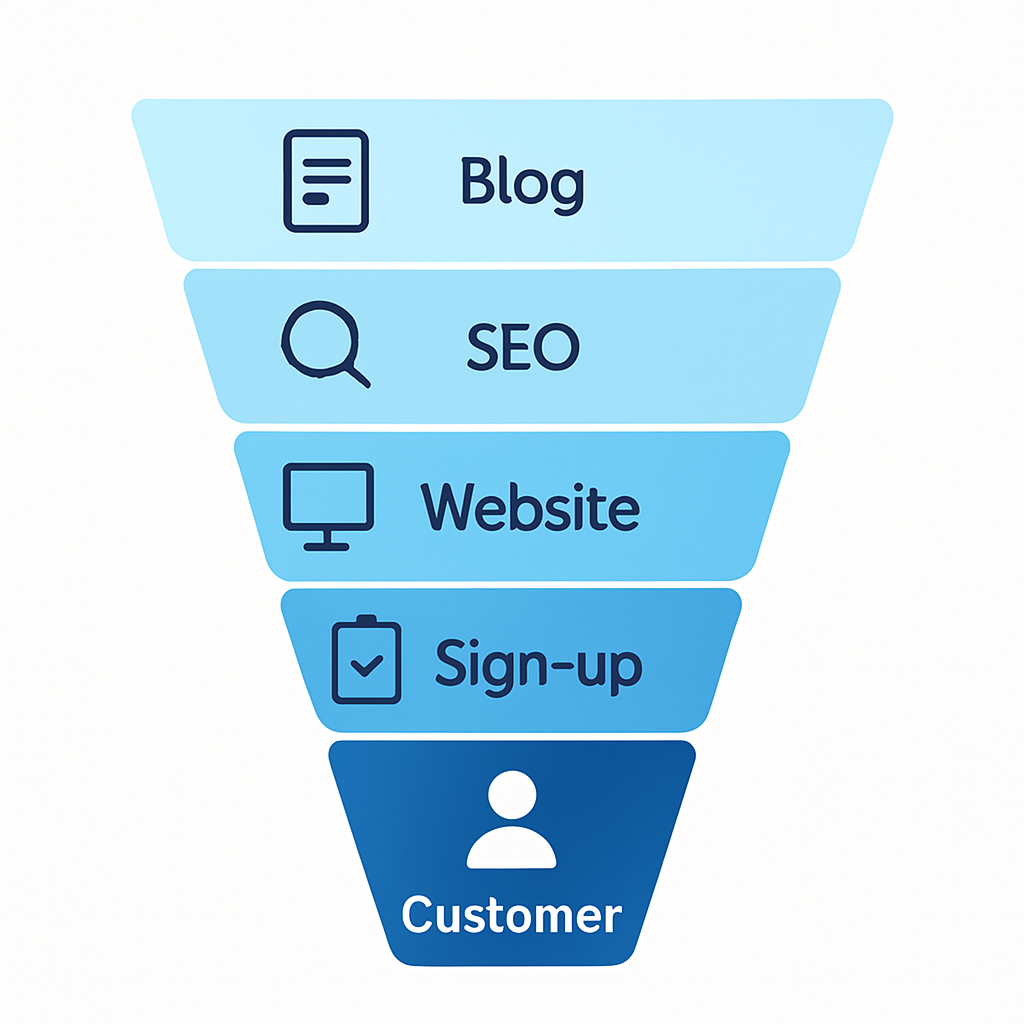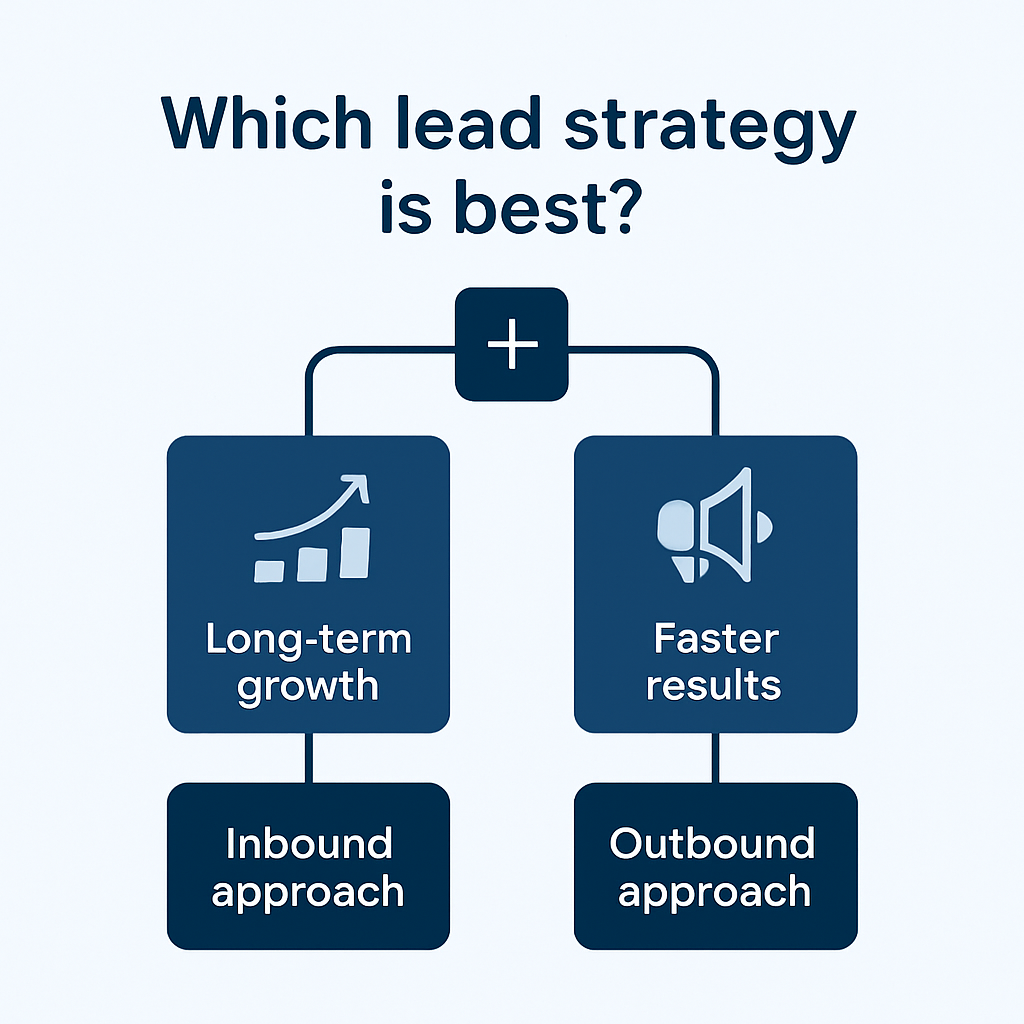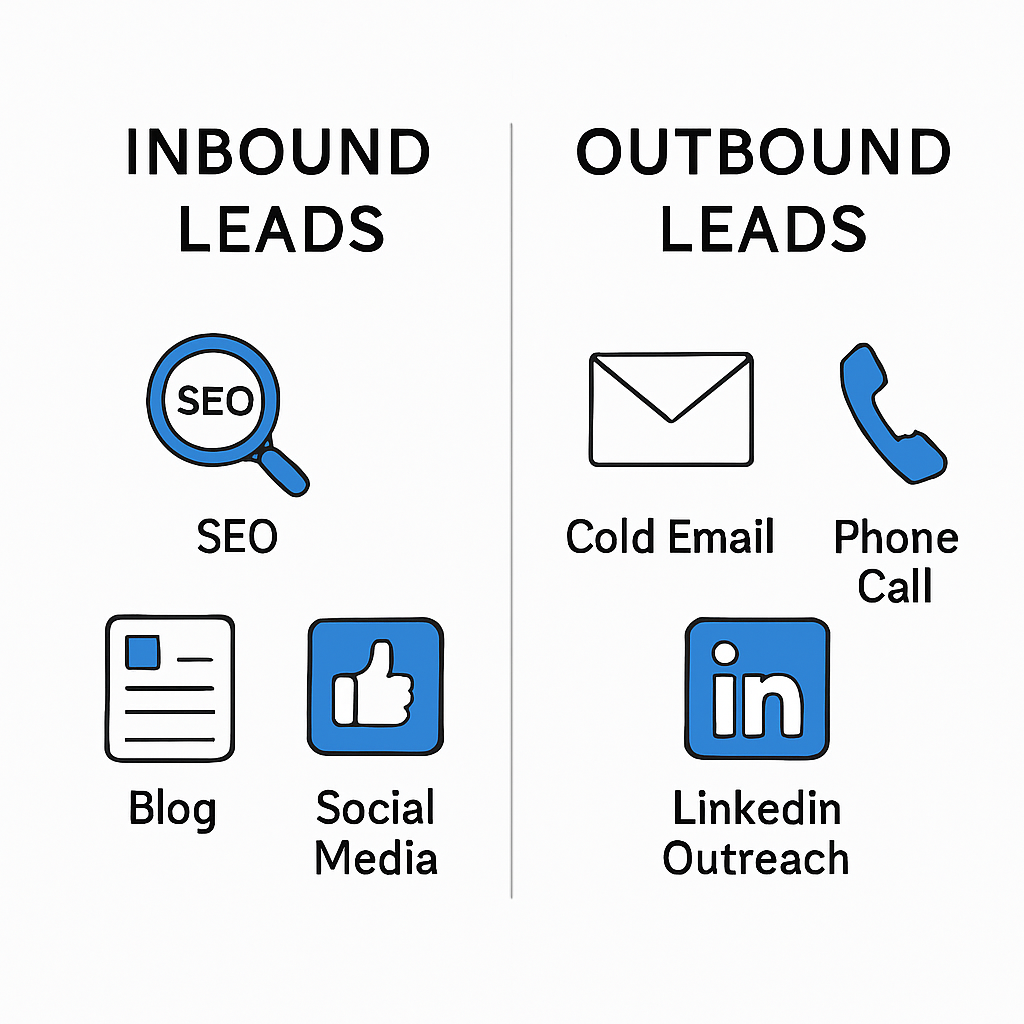When it comes to lead generation, businesses often find themselves deciding between two main approaches: inbound leads and outbound leads. Both strategies can drive growth, but they work very differently—and each one is better suited for certain types of businesses. Let’s break it down.
🔹 What Are Inbound Leads?
Inbound leads are prospects who find your business on their own. They come to you after seeing your content, visiting your website, or discovering you through SEO, social media, or referrals.
Example: Someone searches “best CRM software for small businesses” and lands on your blog. If they sign up for a free trial, that’s an inbound lead.
✅ Best for: Companies with strong content, digital presence, or those targeting customers who research before buying (e.g., SaaS, B2B service providers, consultants).

🔹 What Are Outbound Leads?
Outbound leads are prospects that you actively reach out to through cold emails, calls, LinkedIn outreach, or ads. Instead of waiting for them to come to you, you take the first step.
Example: A sales rep sends a personalized cold email to decision-makers at IT companies.
✅ Best for: Businesses selling to niches where decision-makers aren’t searching online as much, or when fast lead generation is needed (e.g., IT services, B2B agencies, construction suppliers).

🔹 How to Generate Outbound Leads
Cold Email Outreach – Build targeted lists of decision-makers and send value-driven, personalized emails.
LinkedIn Prospecting – Connect with potential clients, engage with their content, and start conversations.
Paid Ads – Run laser-targeted campaigns to capture specific audiences.
Direct Outreach – Phone calls, networking events, or partnerships.
🔹 Key Differences Between Inbound & Outbound Leads
Inbound → Long-term, cost-effective, builds trust, slower to scale.
Outbound → Faster results, highly targeted, but can be expensive and harder to sustain.
🔹 Which One Is Better?
There’s no one-size-fits-all answer:
Inbound works best for businesses that want sustainable, long-term growth and have time to build a strong online presence.
Outbound works best for companies that need fast results, want to test markets, or are targeting niches with limited online search activity.
💡 Pro Tip: The most successful companies combine both. Inbound creates a steady stream of warm leads, while outbound ensures you can actively pursue high-value clients.

✅ Final Takeaway:
If you’re in SaaS, consulting, or marketing, inbound is usually more powerful. But if you’re in IT services, B2B solutions, or industries with slow adoption, outbound might bring better short-term ROI. The smartest move? Mix both for maximum impact.


